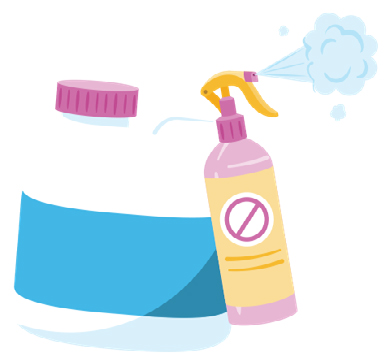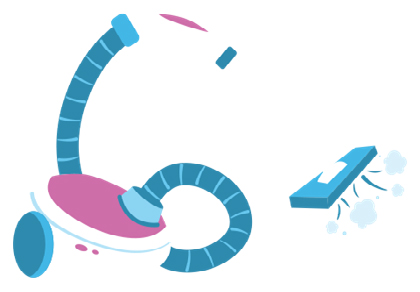Pests | Overview
Providers and patients: The information below can be downloaded and printed in English and Spanish from the links below.
Your health and pests in your home
Do you have cockroaches, mice, rats, ants, bedbugs or other pests in your home?
Dust or droppings from these indoor pests can worsen allergies, asthma, or other disease. Take note of where pests are in your home and where they may be coming from.
Integrated pest management, or IPM, is a safe way to prevent pests from entering your home. This approach limits pesticide use, which can be toxic and can create health problems, especially for those with developing organs and lung disease.
Keep reading to learn how to deal with these unwanted guests safely to protect you and your child’s health!

Prevention tips
- Limit access to food: Seal food containers, put away pet food overnight, and clean up food/drink spills right away.
- Get rid of clutter so you can see pests early and so they can’t hide as easily.
- Seal holes and cracks near baseboards, sinks, and points of entry.
- Avoid pesticides if possible. Try baits or less-toxic agents (boric acid) first. To keep your child safe from baits/traps, be sure they are out of reach and not in areas where your child plays.
- Cleaning tips: Keep trash in closed containers. Vacuum and mop often.
- Fix leaks quickly. Increase ventilation and use dehumidifiers in areas of humidity/moisture.

Staying safe with pesticide use
- Consider using EPA-registered biopesticides and products with EPA’s Safer Choice label, which are less harmful.
- Read the label carefully and follow all instructions and precautions. Don’t use more than recommended.
- Remove or cover food and toys when using them indoors.
- Use gloves and a mask when applying pesticides. Change clothes and wash hands immediately after pesticide use.
- Be sure that your child (and any pregnant or breastfeeding people and pets) aren’t there when you use pesticides. They should stay away until the product has dried and until you’ve ventilated (aired out) the area according to the instructions.

Where can I get more information?
- For concerns with poisonings, call your local Poison Control Center at 1-800-222-1222.
- National Pesticide Information Center
- EPA Guides to Reading Labels
- Find EPA Safer Choice Products
Learn more about pest allergies and asthma triggers:
This document was supported by the American Academy of Pediatrics (AAP) as well as the Asthma and Allergy Foundation of America, New England Chapter. It was funded (in part) by a cooperative agreement with the Centers for Disease Control and Prevention/Agency for Toxic Substances and Disease Registry (CDC/ATSDR). The U.S. Environmental Protection Agency (EPA) supports the PEHSUs by providing partial funding to CDC/ATSDR through an interagency agreement. The findings and conclusions presented have not been formally disseminated by CDC/ATSDR or EPA and should not be construed to represent any agency determination or policy. Use of trade names that may be mentioned is for identification only and does not imply endorsement by the CDC/ATSDR or EPA.

